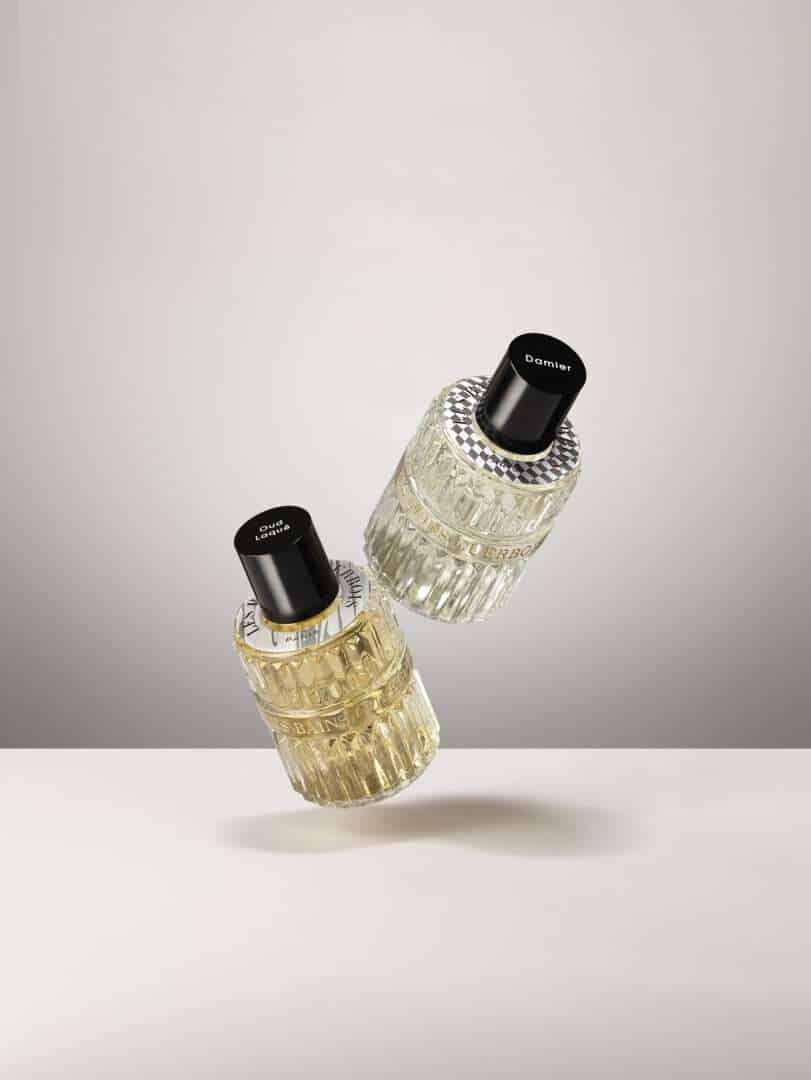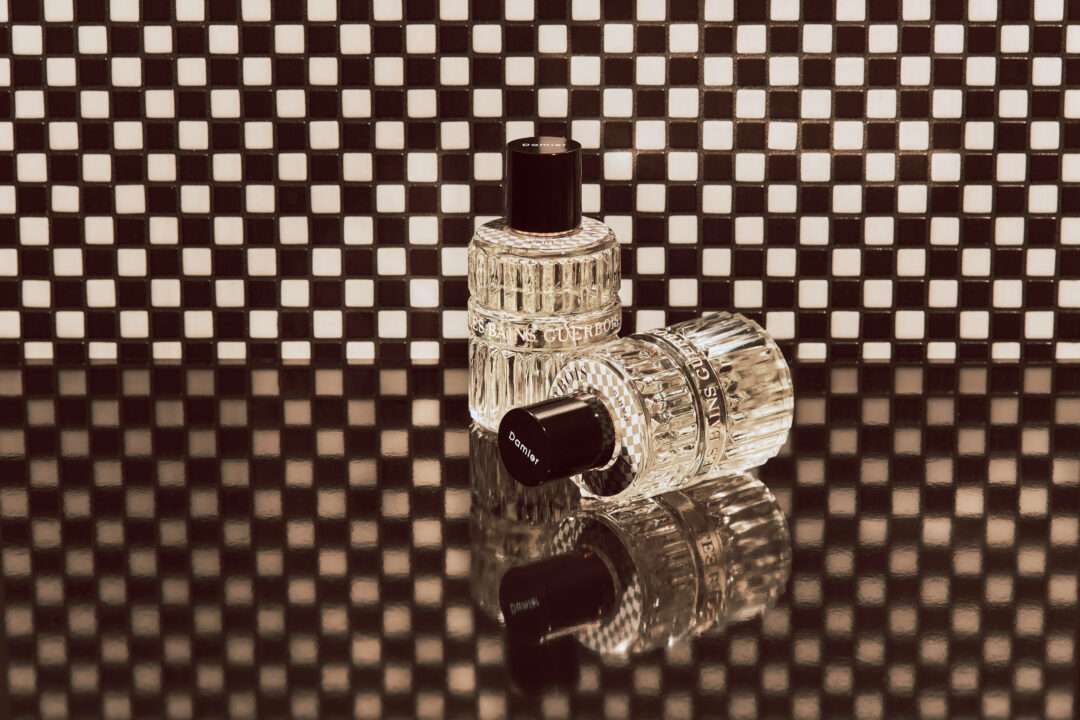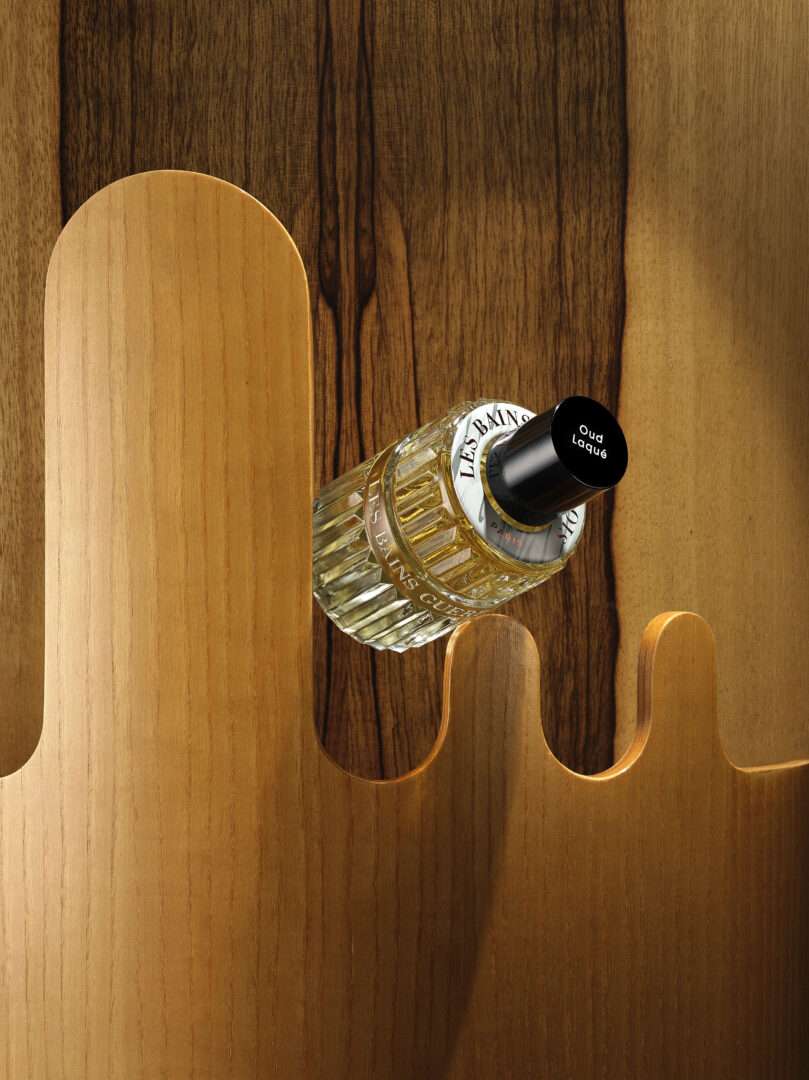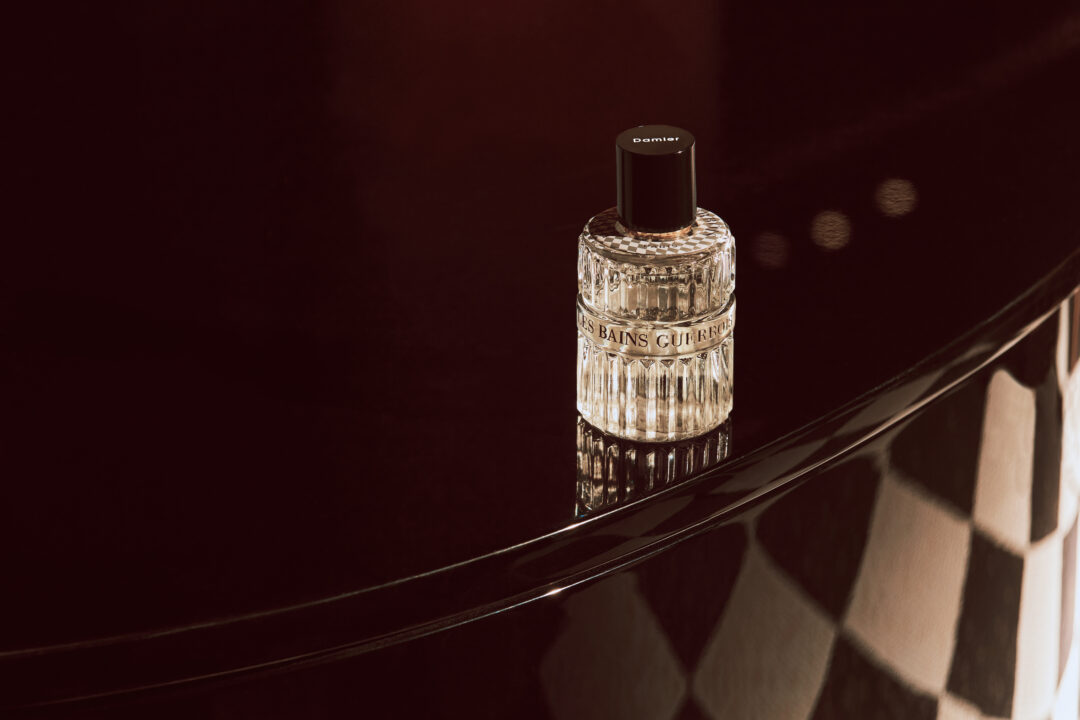Third and last part of the interview with Jean-Pierre Marois, founder of Les Bains Guerbois, in which we may devote ourselves to the latest collection of the brand and its new launches. You can read Part I and Part II here and here. Have fun reading!

Would you like to tell us about your latest collection?
The latest collection is called Formes et Matières, which means “shapes and materials”. Our collections are all about the house and its 140th anniversary. There are two ways to enter it. One is through time. Like a time capsule, but I want to emphasize that we are not a vintage brand, because our fragrances are very modern and tap into a kind of Proustian emotions and memories. They are journeys through time, but in a very contemporary way.
For example, we worked with Jérôme Epinette, who created L’heure de Proust in 1900 and is a superstar perfumer. His interpretation of 1900 L’heure de Proust is not a Belle Époque fragrance, but a very modern one. When we tell the customer that it’s a fragrance about 1900, about the Belle Époque in Paris, they have a certain idea, but on the other hand, the fragrance is so modern that they are completely fascinated. The first collection Une date, une histoire is therefore a journey through time with a contemporary touch.
And Formes et Matières?
The second collection is about visiting the same place, which is now a spectacular, beautiful 3,500m2 building and 5-star hotel in the heart of Paris. The visit here is through the fabrics, the patterns and the materials that are there. Some materials are 140 years old, others are 5 years old. Just as some of our fragrances were inspired by music, like 1979 New Wave, or by a cocktail like 2018 Roxo Tonic, which is about our award-winning hotel cocktail bar, Formes et Matières fragrances were inspired by fabrics. Can a pattern or fabric evoke an emotion and be transformed into a scent? That was our challenge.

Damier is the name of one of the fragrances …
Exactly. For Damier, for example, we worked with Fanny Bal. When Philippe Starck designed the nightclub, he created a black and white checkered dance floor. It’s so iconic. Every superstar has stepped onto this dance floor. Just two years ago, Mick Jagger came and danced there until 2 a.m. on that floor, just like 30 years ago at Les Bains Douches. The chessboard is so unique that it is also found on the packaging of the perfumes.
But how do you translate that into a fragrance? I’ll reveal it: we only used black and white ingredients. When you tell a customer that a master perfumer has captured this legendary floor in this legendary place using only black and white ingredients, you can see the customer’s face light up, and they become very curious. And then you smell the black pepper, which of course is very fashionable right now. But we were ahead of the times, because the use of black pepper in our fragrance was dictated by the concept and not by the trend. So we were right on target with an incredible scent, with pepper, iris, white flowers and milky tendencies.
And the second creation?
The other one is Oud Laqué. I hired a well-known interior designer to remodel the hotel, and he’s now a superstar. His name is Tristan Auer and he has done the private interiors for Mick Jagger or François-Henri Pinault, the owner of Gucci and Saint-Laurent, whose Paris home Auer furnished.
We have used a lot of valuable woods in the hotel, which are lacquered uniquely. It is a layer of varnish that almost turns the wood into a mirror. Everyone who stays at our hotel says, “Oh my God, this painted wood is incredible!” So we created an oud fragrance and called it Oud Laqué. It was inspired by all the painted wood panels in the hotel. It was Mathieu Nardin who created the fragrance, and he really made a different kind of oud, we think. It is long-lasting and powerful, but much more subtle than what else is on the market.

And soon there will be a third fragrance on the market.
Yes, we are very excited to launch the third fragrance in the collection in October, it’s called Raku. Raku is a type of pottery made in Japan. If you look at the pictures of Les Bains Douches nightclub and the celebrities, you can see mostly white tiles in the background, bordered with blue ones. We have pictures of David Bowie or Mick Jagger or Karl Lagerfeld in front of these white and blue tiles. And the tiles are always cracked. At that time in France it was very popular to put the tiles in the oven, where they became so hot that they cracked. This gives the tiles a very beautiful and special texture. So we thought that these cracked tiles are very characteristic of the place.
And Tristan Auber said that in Japan there is this technique, which is actually the same, but with much more dramatic result. With cracks in different contrasts. He proposed to design the bar in the nightclub and the tables with these tiles. So he designed the tables and the bar, and we had raku tiles custom made. The scent has to do with that, and you’ll see it’s an incredible fig component, kind of milky and soft. I think it will be a great success.
Was there a fragrance that was particularly challenging for you?
The history of the house is so powerful that we can release ten more fragrances, with ten dates and ten incredible stories, and we will. But I was really interested in changing the approach and the point of view, away from the temporal level to the material one. Formes et Matières was a great challenge. The whole concept, the approach. It made sense to me because it is a present experience of now, an experience of the place as it is there now. I thought it was an interesting approach, but it’s one thing to think about it and another to put it into action. So that was a big challenge, and I was really scared.

But it worked.
Yes, we just had to do something with this incredible checkerboard that we have on the boxes and on the logo under Bacchus. It was part of us from the beginning, and I wanted it to be part of our identity. So I said, okay, we need to create a fragrance with this checkerboard pattern, and we created Damier. That was a big challenge, an incredible challenge. When we brainstormed the idea of using only white and black ingredients, I knew right away that was it. Then it became a task for Fanny to combine these fragrances and choose the right ones, since there are only two colors. That was exciting.
Dear Jean-Pierre, thank you very much for taking the time to answer my questions.

Be First to Comment